This article was co-authored by Luna Rose. Luna Rose is an autistic community member who specializes in writing and autism. She holds a degree in Informatics and has spoken at college events to improve understanding about disabilities. Luna Rose leads wikiHow's Autism Project.
This article has been viewed 33,035 times.
Sometimes it is difficult to explain to young children what autism is. Autistic children will notice that they are different, and want to know why. Non-autistic children will notice that the autistic person is different, and may have questions about how autism works and how to respond. Understanding is especially important if you have an autistic family member. Offering information and being kind can help smooth over conflict and confusion in your home.
Steps
Explaining Autism in General
-
1Don't fear using the word. If you try to hide a child's autism or discuss it in whispers, they'll learn that it's something shameful or bad. You can mention the word "autism" in their presence even before they are old enough to understand. Many parents worry a child's self-esteem will be harmed by being told their diagnosis. However, children will notice that they're different, and withholding the truth doesn't help them.
- Some children will begin asking questions earlier on than others. In general, when your child stars to ask questions, this may be a good opportunity to begin the explanation.
- Usually, once an autistic child is surrounded by peers at school, they will realize that they act differently and are treated differently. They need to know why, or they might think something is wrong with them.
-
2Learn the basics of autism. It's difficult to explain something if you don't even understand it. Do some research, so that you know the general facts and can answer simple questions. There are many great books written on autism that can help you explain the diagnosis to your child.
- Ask the Autistic community for reading recommendations. Search for books and essays written by autistic people as a primary source. Consider books written by non-autistic family members as a secondary source.
- Some literature speaks very negatively about autism, treating autistic people as burdens upon their families. Watch your sources and use your judgment when selecting reading material.
Advertisement -
3Expect to have multiple conversations. Your child will probably come back with more questions, and you'll have multiple opportunities to teach them. Don't feel that you need to fit all the information into one conversation. It's normal to have the conversation over a course of time.
- Always keep the conversation open. Remind your child that you're here if they have questions. Say something like, "If you ever want to know more, just ask. You may be confused sometimes by why you're different from other people, and I'm always here to explain."
- In many cases, a child learns the most about autism through asking as questions arise. You may not always know the answer. You can always say "I don't know" and look it up or ask someone else later.
-
4Keep the discussion positive. Look for inclusive children's books and movies, especially those written by autistic people. This can be an easy and fun way to introduce the idea of diversity and acceptance. You do not want the child to see autistic differences as negative. Instead, focus how they are unique, special, and valued.
- Make sure the child knows that it's not bad to be disabled. Say something like "Autism is why some things are hard for you, like loud kitchens or tying your shoes, and also why you're good at some things, like spelling and facts about cats. You're different, and that's okay."
- Remind your autistic child that they are not alone. Let them know that there are plenty of autistic children (and autistic adults) in the world. If your child is mainstreamed, make sure they have an opportunity to meet other autistic people.
- Make it clear that childhood messages of "be yourself" also apply to autistic people, and your child shouldn't need to hide who they are. Make it clear that you're proud of your child, autism and all.
-
5Use a neutral, accepting tone. Your attitude can help shape your child's opinions of autism. Use the same tone of voice that you'd use to explain why cars have wheels, or why you go to the grocery store every weekend. This sends the message that autism is okay, and nothing to worry much about.
-
6Explain the basics of autism. It's important to start with the simplest parts. Focus on what is most relevant to your child. This will depend upon the person, and if it is someone the child knows, how close they are to the child.
- Explain why a sibling may behave differently. For example, say something like, "Because your sister is autistic, sometimes she needs quiet time and gets upset when people touch her without her permission."
- Explain that autism is a brain type, not a choice or an illness. You could say "Lucy was born non-autistic, and you were born autistic. That means you'll be different from each other, and that's okay. Some things are very hard for you, and some things are easier."
-
7Make use of metaphor. Metaphor can help a child developed a better understanding of autism. Think of metaphors you could use to explain to a child how their or their loved one's brain works differently.
- A toaster/hairdryer analogy is common in the Autistic community. For example, "Let's say your brother's brain works like a toaster. A toaster is an important tool that achieves many vital tasks. Your brain works like a hairdryer, which is also a useful tool. However, it's very hard to make toast with a hairdryer, just as you couldn't dry hair with a toaster. Both of you have special contributions to the world. They're just very different."[1]
-
8Talk about some of the strengths associated with autism. Pinpoint a few strengths that the autistic person has, and explain them briefly. This lets the child know that autism isn't all bad, and that they don't need to feel sorry for the autistic person.
- "Autism is also why you are so good at math, and why you have such a big imagination."
- "Alex is good with computers, and knows a lot of things about cats, because of autism. It has great parts and hard parts."
-
9Make it clear that it's okay to be different. There's nothing "bad" or "wrong" with an autistic person, and they can be themselves just like other people do. Encourage a non-autistic child to be open-minded and accepting towards autistic people. Remind an autistic child that it's okay to struggle, and that autism doesn't make them bad.
- Encourage your child to ask questions and be patient when they don't understand.
-
10Tell a non-autistic child how to respond. You can let other children know how to help their autistic loved one. Briefly say what they can do to interact well and help the autistic person feel more comfortable. Offer insight into an autistic person's world to help explain.
- You can say things like, "If your friend is covering his ears, it means he needs some quiet time. You can help by giving him space and letting an adult know that he could use help."
- Also, explain any behaviors that could potentially confuse a child. For instance, "Renisha flaps her hands when she is excited because she is autistic. It's normal for autism, and it just means she's having fun."
-
11Warn a computer-savvy child not to look up autism. The internet is filled with negative and misleading sources such as Autism Speaks. This may lead an autistic child to feel ashamed of themselves, or for a non-autistic child to think that autistic people are a burden.
- An autistic child who comes across negative attitudes about autism may start to feel low self-esteem or even self-hatred. You can combat this by praising the child's strengths, and teaching them that everyone is lovable and important, including autistics.
Explaining Home Life
If your family has both autistic and non-autistic family members, there might be some confusion as children grow up and notice differences.
-
1Make the ground rules clear. Explain why your family might have different rules, and why they are important. Non-autistic children might not intuitively realize why some things are upsetting or painful to an autistic family member, so it's important for you to explain.
- For example, "Because Mommy is autistic, loud noises can hurt her when she is stressed. When this happens, she'll go to her room to relax. If Mommy is in her room, it's important to leave her alone, so she can feel better faster."
- Encourage all children to set boundaries like "I don't want to be touched" or "I need quiet time." It's essential for autistic children to know how to assert themselves, and non-autistic children could also benefit from this skill (and learn to take the autistic family member seriously).
-
2Explain differences in chores and expectations. Non-autistic children may get frustrated or jealous if their autistic sibling does not have to help as much with chores. If they get upset, explain why this happens.
- Emphasize that chores are based on ability, not age. It may take a lot of effort for an autistic child to do chores, so it's normal for them to have less or none at all.
- Explain to your other children that therapy is work, and is different from play. For example, "I know it looks like your sister's just playing, but it's actually quite hard for her. She's trying to learn certain skills that do not come easy to her. This is a chore for her, just like you have to clean your room. It's just different."
- Always reassure your autistic child that they are important. Remind them that being a family member isn't dependent on doing certain things, and that the child contributes in their own, important way.
-
3Share your attention as equally as possible. This can be difficult sometimes. Autistic children may often need special attention. Make sure to share your time as equally as possible. Provide positive one-on-one time with all of your children.
- Make a habit of giving small gestures of affection to all your children. Say things like, "I'm really proud of you" and "You did a great job on that assignment."
- When you have the time, spend one-on-one time with each of your children, especially ones who haven't gotten as much attention from you lately. This can sometimes be hard to schedule, but try to get in some one-on-one time a few times per week.
-
4Reassure your autistic child. Autistic children might fear being a burden, or worry that they aren't good enough. This can especially be a problem if everyone is focusing on their flaws. Avoid making your child's current inabilities into a big deal, and work on their strengths as well as their weaknesses.
- Don't make a big deal out of your child's needs. If your child can't handle something, calmly offer an alternative. This way, they're less likely to feel guilty for being disabled.
- Consider whether your child has any one-on-one time that isn't taken up by therapy goals. Are you ever having fun with them, or is every interaction spent working on something?
- Give your child free time to just play, without being pushed to meet predefined goals. They should be able to enjoy childhood too. (And you don't need to spend the next decade transporting your child between therapies. You also can relax.)
- Encourage your child to develop their strengths and special interests.
-
5Reassure your non-autistic children regularly. Your non-autistic children may sometimes be frustrated or confused. They may feel their sibling gets more attention. Reassure them regularly they are valued, but have different needs. Say something like, "We love you all the same. Lucy sometimes needs extra help when you don't. We help people when they need it, and Lucy often needs more."
-
6Find activities everyone can enjoy. Some family activities may be off limits for an autistic family member. If loud noises bother your autistic loved one, for example, going to the movies can be stressful. Try to compromise and find activities everyone can enjoy.
- For example, if loud movie theaters frighten your autistic family member, home movie nights might be a lot more comfortable.
Expert Q&A
-
QuestionIn what ways to autistic people think differently?
 Luna RoseLuna Rose is an autistic community member who specializes in writing and autism. She holds a degree in Informatics and has spoken at college events to improve understanding about disabilities. Luna Rose leads wikiHow's Autism Project.
Luna RoseLuna Rose is an autistic community member who specializes in writing and autism. She holds a degree in Informatics and has spoken at college events to improve understanding about disabilities. Luna Rose leads wikiHow's Autism Project.
Community Expert Different doesn't have to be "better" or "worse." To my sister, I always say that every brain works a little bit differently. Autistic brains, in particular, are more sensitive, all the way down to the brain stem. My autism specialist says that the autistic brain is the most sensitive brain found in the world.
Different doesn't have to be "better" or "worse." To my sister, I always say that every brain works a little bit differently. Autistic brains, in particular, are more sensitive, all the way down to the brain stem. My autism specialist says that the autistic brain is the most sensitive brain found in the world.
Warnings
- Your child might decide to start asking the autistic person questions. Discourage this gently, unless you know that the autistic person will not mind talking about it. If the autistic person can take questions, then teach your child the difference between intrusive questions ("Do autistic people have bellybuttons too?") versus helpful questions ("Does the smell of hot peppers in my lunch bother you? Should I eat them first so you don't have to smell them anymore?")⧼thumbs_response⧽
- Try not to overplay the importance of giving the child space; this may lead your child to believe that the autistic child should be avoided completely, leaving them feeling isolated. Encourage your child to talk to them, should they want to talk or ask questions.⧼thumbs_response⧽
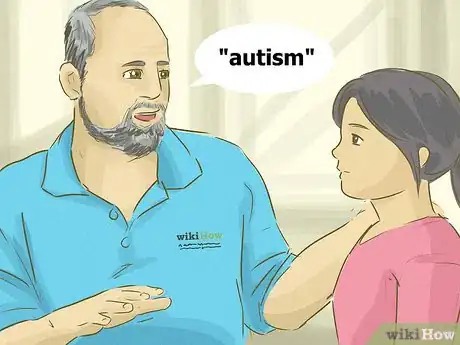

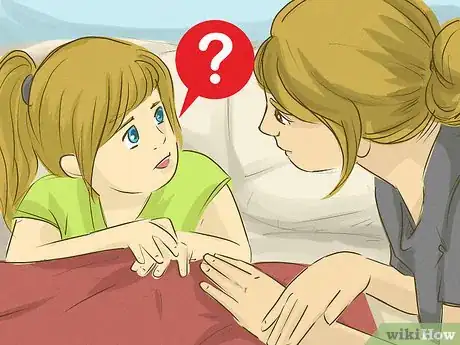
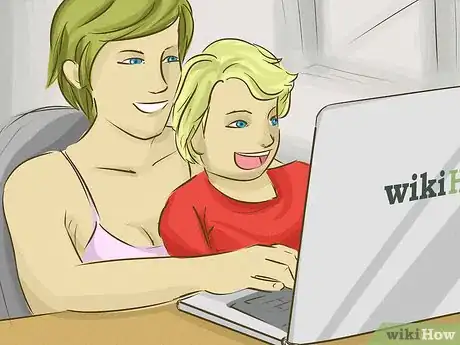

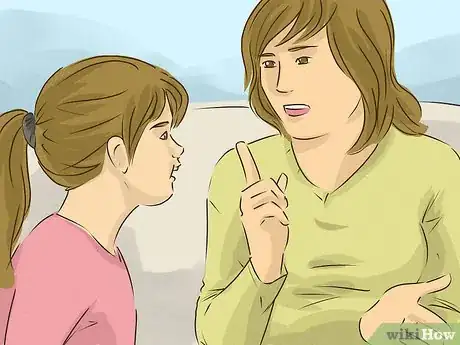

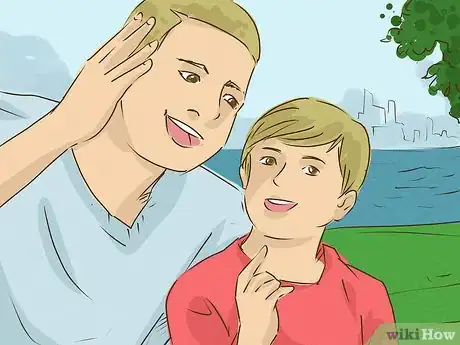
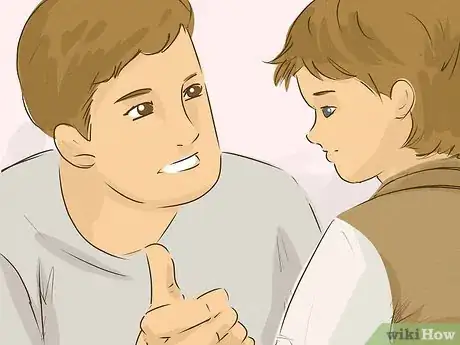
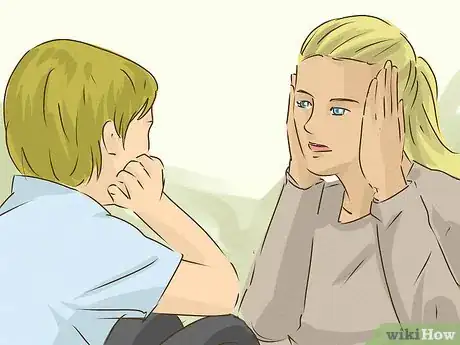
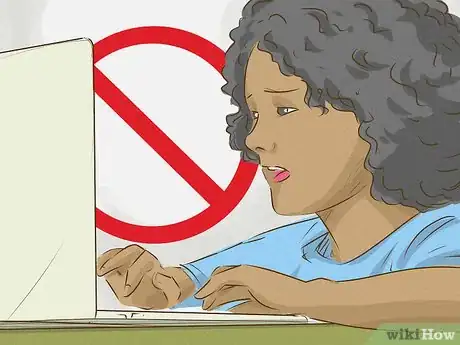
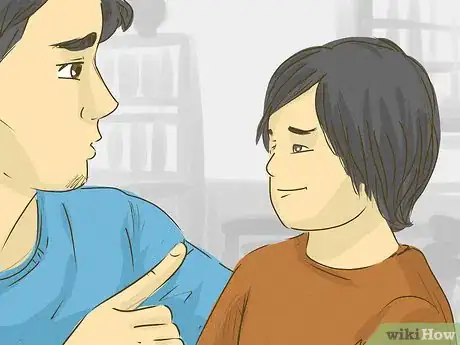



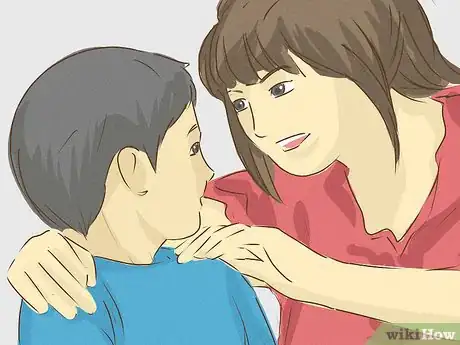
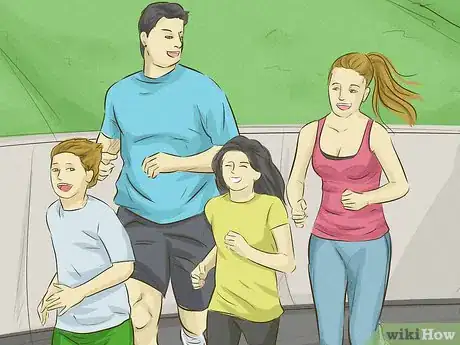



























































Medical Disclaimer
The content of this article is not intended to be a substitute for professional medical advice, examination, diagnosis, or treatment. You should always contact your doctor or other qualified healthcare professional before starting, changing, or stopping any kind of health treatment.
Read More...